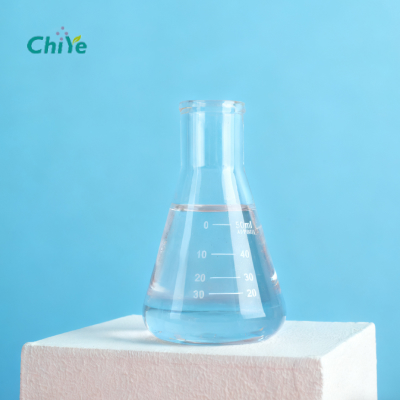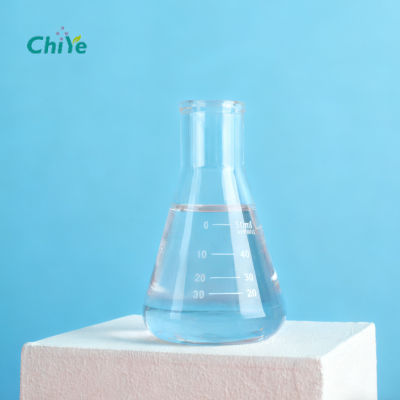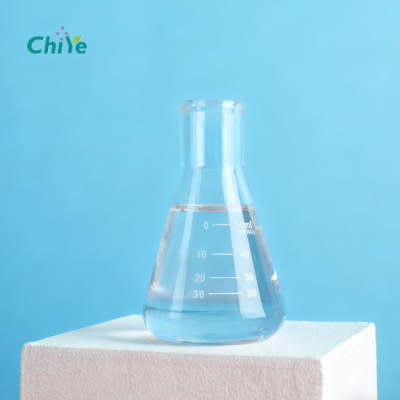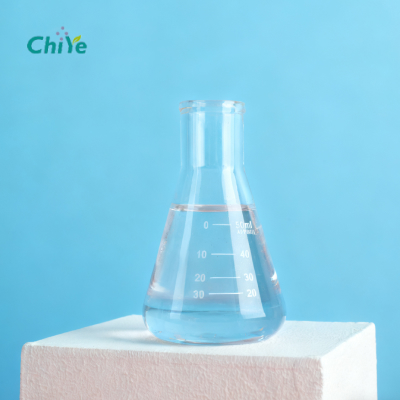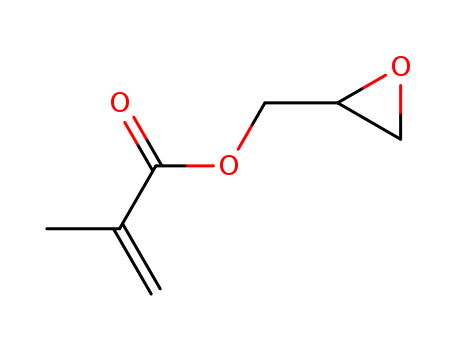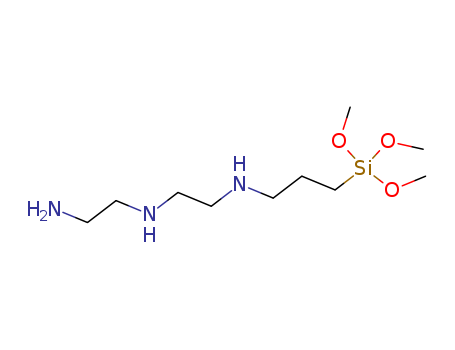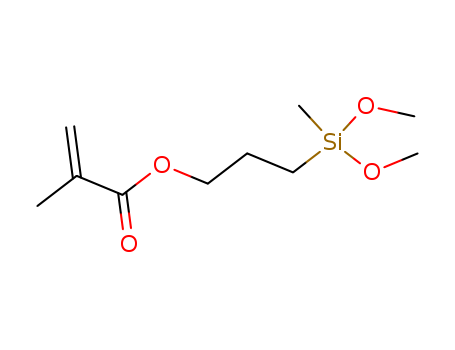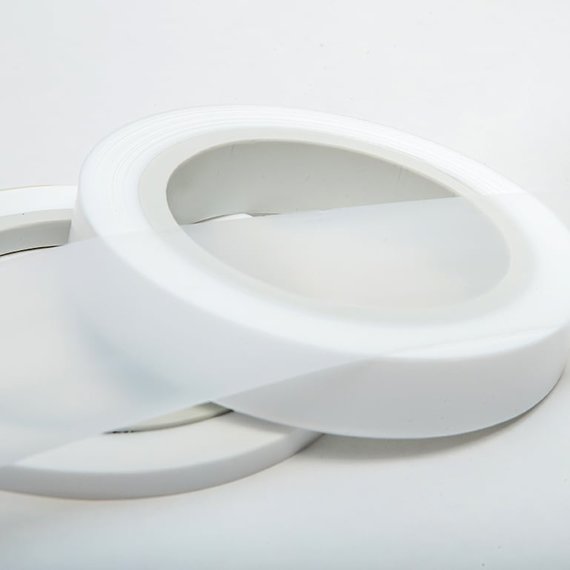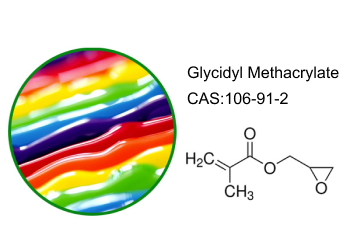
106-91-2
- Product Name:Glycidyl Methacrylate(GMA)
- Molecular Formula:C7H10O3
- Purity:99%
- Molecular Weight:142.155
Product Details
The case No. : 106-91-2
The answer : 142.1525
Please : C7H10O3
Glycidyl methacrylate is a colorless, transparent liquid insoluble in water, soluble in almost all organic solvents, and irritating to skin and mucous membranes. Avoid contact with acids, oxides, UV radiation, free radical initiators.
Because it contains both carbon-carbon double bonds and epoxy groups in its molecule, it can carry out both radical reaction and ionic reaction. Therefore, it has high reactivity and is an important fine chemical raw material.
| Product name: | Glycidyl methacrylate | Ingredients: | epichlorohydrin, methacrylic acid, sodium hydroxide |
|---|---|---|---|
| Safety terms: | S26:; S28A: | Vapor pressure: | 0.582mmHg at 25°C |
| Molecular Weight: | 142.1525 | Chroma(APHA): | 30.0 ± 5.0 |
| Density: | 1.095g/cm3 | Specific gravity(20 ℃, g/ml): | 1.073~1.083 |
| Boiling point: | 189°C at 760 mmHg | Viscosity (20 ℃, CPS): | 2.53 ± 0.05 |
| Flash Point: | Temperature: 76.1 ° C | Polymerization inhibitor content (MEHQ ppm): | Max 100 |
| Purity (%): | Minimum 99 | Acid value(mgKOH/g): | 0.05 ± 0.01 |
| Water content: | Max. 0.15 | Index: | Appearance Clear liquid |
Storage method:
- Store in a cool, ventilated warehouse.
- Stay away from fire and heat. Storage temperature should not exceed 30℃.
- Store away from light. It should be stored separately from acids and oxidants, and should not be mixed.
- Explosion-proof lighting and ventilation facilities shall be adopted. It is prohibited to use mechanical equipment and tools that are easy to generate sparks.
- Storage areas should be equipped with spill response equipment and suitable containment materials.
Product Application:
GMA molecule has two functional groups, active vinyl group and epoxy group with ionic reaction, which can be polymerized by functional group or ionic reaction. Therefore, it can be used for modification of ethylene polymer and polycondensation polymer. GMA can be involved in polymerization in three ways, one is ethylene polymerization, so that the epoxy group is located on the branch, that is,"O" polymer; the other is epoxy ring opening, so that the vinyl group is located on the branch, that is,"V" polymer; the third is a compound with active hydrogen and GMA reaction, ring opening on the epoxy group into a chain. The polymer is modified at the time of polymerization by any one of the above three methods. In coatings, GMA can improve hardness, gloss, adhesion and weather resistance of coatings. It can be used in acrylic coatings, acrylic ester coatings, alkyd resin coatings, vinyl chloride resins and some water-based coatings.
Acrylic emulsion, binder and nonwoven fabric can improve the adhesion to metal, glass, cement and polyvinyl fluoride when GMA is used; when used in synthetic latex nonwoven fabric, it can improve its washing resistance without affecting the feel. When used in synthetic resin material processing, it can improve its injection moldability, extrusion moldability, and obviously improve the adhesion with metal. When applied to synthetic fibers, it can improve the coloring power of poorly dyed fibers, improve color fastness, and improve crease resistance and shrinkage resistance. This product can improve the sensitivity, resolution and corrosion resistance of photosensitive resin.
Main Uses:
⑴. Mainly used in powder coatings, but also thermosetting coatings, fiber treatment agents, adhesives, antistatic agents, vinyl chloride stabilizers, rubber and resin modifiers, ion exchange resins and printing ink adhesives.
⑵. Used as a functional monomer in polymerization reactions. Mainly used in the manufacture of acrylic powder coatings, used as soft monomer and methyl methacrylate and styrene hard monomer copolymerization, can adjust the glass transition temperature and flexibility, improve the gloss of the coating, adhesion and weather resistance. It is also used in the manufacture of acrylic emulsions and nonwoven fabrics. As a functional monomer, it can be used to produce photosensitive resin, ion exchange resin, chelating resin, selective filter membrane for medical use, dental material, anticoagulant, insoluble adsorbent, etc. It is also used to modify polyolefin resins, rubber and synthetic fibers.
(3) Because it contains both carbon-carbon double bonds and epoxy groups in its molecule, it is widely used in the synthesis and modification of polymer materials. Used as reactive diluent for epoxy resins, stabilizer for vinyl chloride, modifier for rubber and resins, ion exchange resins and binder for printing inks. Also used in powder coatings, thermosetting coatings, fiber treatment agents, adhesives, antistatic agents and so on. In addition, GMA has also significantly improved the adhesion, water resistance and solvent resistance of adhesives and nonwoven coatings.
⑷. In electronics, it is used for photoresist film, electron ray, protective film, far infrared phase X-ray protective film. In terms of functional polymers, it is used for ion exchange resins, chelating resins, etc. In medical materials, used in anti-blood coagulation materials, dental materials, etc.
product application


Physical data:
| Property: | colorless transparent liquid | Boiling point (℃, 1.33KPa): | 75 |
|---|---|---|---|
| Relative Density: | 1.042 | Melting point (℃): | -82 |
| Solubility: | Soluble in organic solvents, insoluble in water | Refractive index (20℃,NO25): | 1.4492 |
| Autoignition point or ignition temperature (℃): | 389 | Lower explosive limit ( %,V/V): | 1.1 |
Toxicological data:
⑴. Irritant:
Rabbit skin irritation: 500ul/24H Severe irritation.
Rabbit eye irritation: 100mg moderate intensity irritation.
⑵. Acute toxicity:
LD50: 500mg/kg for rats, LD50: 390mg/kg for mice, LD50:500 mg/kg for rats, LD50:500 mg/kg for mice, LD 50:500 mg/kg for mice.
Rabbit skin LD50: 480mg/kg; rat inhalation LC50: 45ppm/4H.
⑶. Irritant to skin and mucous membrane.
⑷. LD50: 1.122 mg/kg for intraperitoneal injection in mice, LD50: 770mg/kg for oral administration in rats, LD50: 450mg/kg for skin application in rabbits.
Molecular structure data:
| Molar Refractive index: | 35.59 | Molar volume (cm³/mol): | 129.7 |
|---|---|---|---|
| Isotonic specific volume (90.2K): | 318.0 | Surface tension (dyne/cm): | 36.1 |
| Polarizability: | 14.03 |
Notes:
1. Harmful by inhalation, skin contact and ingestion.
2. Irritates eyes and skin.
3. Skin contact may cause sensitization.
4. After contact with eyes, rinse immediately with plenty of water and seek medical advice.

Reliable Quality Glycidyl Methacrylate(GMA) 106-91-2 Hot Sale with Chinese Manufacturer
- Molecular Formula:C7H10O3
- Molecular Weight:142.155
- Appearance/Colour:clear liquid
- Vapor Pressure:0.582mmHg at 25°C
- Melting Point:-52 °C
- Refractive Index:n20/D 1.449(lit.)
- Boiling Point:188.999 °C at 760 mmHg
- Flash Point:76.111 °C
- PSA:38.83000
- Density:1.042 g/cm3
- LogP:0.50450
Glycidyl methacrylate(Cas 106-91-2) Usage
|
Preparation |
Glycidyl methacrylate is produced from methacrylic acid and glycidol. Glycidol contain both epoxide and alcohol functional groups.It is an enoate ester and an epoxide. It derives from a methacrylic acid and a glycidol. |
|
Reactions |
Glycidyl methacrylate (GMA) is a kind of functional monomer. Its active vinyl and epoxy groups could be grafted with polyolefin and reacted with the polar groups such as amine, hydroxyl and carboxyl group, respectively. It can also undergo polymerization to form poly (glycidyl methacrylate). |
|
Synthesis Reference(s) |
Tetrahedron, 48, p. 5099, 1992 DOI: 10.1016/S0040-4020(01)90120-6Synthesis, p. 1019, 1986 DOI: 10.1055/s-1986-31856 |
|
Air & Water Reactions |
Flammable. Slightly water soluble. |
|
Reactivity Profile |
Epoxides, such as Glycidyl methacrylate, are highly reactive. They polymerize in the presence of catalysts or when heated. These polymerization reactions can be violent. Compounds in this group react with acids, bases, and oxidizing and reducing agents. They react, possibly violently with water in the presence of acid and other catalysts. |
|
Health Hazard |
The liquid irritates eyes about as much as soap. Prolonged contact with skin produces irritation and dermatitis. |
|
Fire Hazard |
Special Hazards of Combustion Products: Irritating vapors are generated when heated |
|
Flammability and Explosibility |
Flammable |
|
General Description |
Colorless liquid with a fruity odor. Floats on water. |
InChI:InChI=1/C7H10O3/c1-5(2)7(8)10-4-6-3-9-6/h6H,1,3-4H2,2H3/t6-/m1/s1
106-91-2 Relevant articles
Environmentally benign synthesis of vinyl ester resin from biowaste glycerin
Shah, Priyank N.,Kim, Namjoon,Huang, Zhuangrong,Jayamanna, Mahesh,Kokil, Akshay,Pine, Alex,Kaltsas, Jarmin,Jahngen, Edwin,Ryan, David K.,Yoon, Seongkyu,Kovar, Robert F.,Lee, Yongwoo
, p. 38673 - 38679 (2015)
We present here for the first time a nov...
Life Cycle Assessment for the Organocatalytic Synthesis of Glycerol Carbonate Methacrylate
Büttner, Hendrik,Kohrt, Christina,Wulf, Christoph,Sch?ffner, Benjamin,Groenke, Karsten,Hu, Yuya,Kruse, Daniela,Werner, Thomas
, p. 2701 - 2707 (2019)
Bifunctional ammonium and phosphonium sa...
-
Iwakura et al.
, p. 570,572 (1961)
-
Sustainable chemo-enzymatic synthesis of glycerol carbonate (meth)acrylate from glycidol and carbon dioxide enabled by ionic liquid technologies
Donaire, Antonio,Garcia-Verdugo, Eduardo,Lozano, Pedro,Luis, Santiago V.,Nieto, Susana,Porcar, Raul,Villa, Rocio
, p. 4191 - 4200 (2021/06/17)
A sustainable chemo-enzymatic process fo...
(Methyl) acrylic acid ether hydroxyl alkane ester synthesis method
-
Paragraph 0027, (2019/08/07)
The invention relates to the field of or...
From epoxide to cyclodithiocarbonate Telechelic polycyclooctene through chain-transfer ring-opening metathesis polymerization (ROMP): Precursors to non-isocyanate polyurethanes (NIPUS)
Vanbiervliet, Elise,Fouquay, Stéphane,Michaud, Guillaume,Simon, Frédéric,Carpentier, Jean-Fran?ois,Guillaume, Sophie M.
, p. 69 - 82 (2017/04/03)
Telechelic polycyclooctenes (PCOEs) have...
106-91-2 Process route

-

- 106-91-2,25067-05-4,98104-93-9
2,3-Epoxypropyl methacrylate

-

- 60-24-2
2-hydroxyethanethiol
| Conditions | Yield |
|---|---|
|
|

-

- 106-91-2,25067-05-4,98104-93-9
2,3-Epoxypropyl methacrylate

-

- 103-01-5
N-Phenylglycine
| Conditions | Yield |
|---|---|
|
|
106-91-2 Upstream products
-
556-52-5

oxiranyl-methanol
-
920-46-7

Methacryloyl chloride
-
79-41-4

poly(methacrylic acid)
-
106-89-8

epichlorohydrin
106-91-2 Downstream products
-
37817-81-5
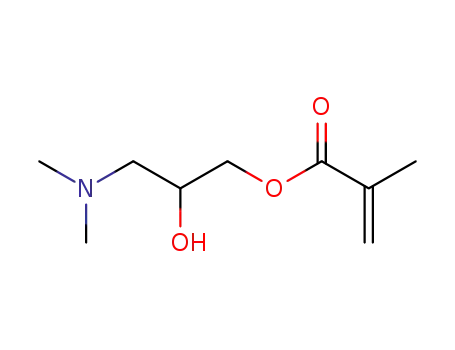
3-dimethylamino-2-hydroxypropyl (meth)acrylate
-
13818-44-5

(2-oxo-1,3-dioxolane-4-yl)methyl methacrylate
-
123558-06-5

2-Methyl-acrylic acid 3-(4-carbamoyl-phenylamino)-2-hydroxy-propyl ester
-
106813-38-1

Benzoic acid 1-chloromethyl-2-(2-methyl-acryloyloxy)-ethyl ester
Relevant Products
-
Diethylenetriaminopropylmethyldimethoxysilane
CAS:35141-30-1
-
3-Methacryloxypropylmethyldimethoxysilane
CAS:14513-34-9
-
PTFE Film
CAS:9002-84-0

